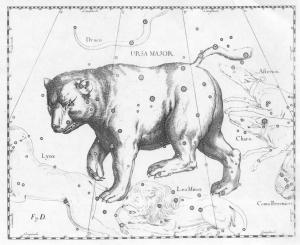The Ramayana — “Rama’s journey” in Sanskrit — is one of the oldest written epics and a prominent pillar of Hindu literature and Desi culture. Most children grow up hearing tales of Prince Rama, either through books, comics, movies, or, like, B. in BRAHMAN/I, from relatives. The Ramayana is one of the Easter eggs in the DISPLACED HINDU GODS TRILOGY, and each play bears thematic links to the epic.
The Ramayana deals with the Hindu concept of duty, dharma, and, through the adventures of Prince Rama, readers or listeners learn how to behave virtuously and fulfill one’s duty. Rama himself is the seventh avatar of Vishnu, and thus displays the decorum and leadership expected of a warrior king, heroically defeating the ten-headed demon Ravana. The supporting characters include Sita, Rama’s devoted and faithful wife, Lakshmana; his loyal and brave brother, Hanuman; the Monkey King and Rama’s ally; and the hijras, who are rewarded for their fealty to Rama after waiting fourteen years in the forest for him to return from exile.
Each play in the trilogy either directly references or is inspired by Rama’s story. In BRAHMAN/I, B. resents identification with the “genetically stupid” hijras despite Auntie’s enthusiasm for them and instead prefers the “gangsta” Hanuman. But B.’s path to self-discovery includes fulfilling their duty to themselves and accepting that they are don’t have to fit into the dominant gender binary. B. casts their back-up musician J as Odysseus from the ancient Greek Odyssey, and at the end of the play, both characters have returned from a kind of outsider’s exile and learned to accept each other and themselves. Kalki, the tenth avatar of Vishnu, struggles in THE CHRONICLES OF KALKI to come to terms with her present humanity and its attendant emotions that are an obstacle to fulfilling her duty to vanquish evil. She remembers her past incarnation as Rama and being “loved for doing so little.” Though SHIV’s direct reference to the Ramayana passes quickly (listen for the conversation about Vimanas — ancient flying machines), Shiv’s conflicting duties to honor the memory of her father while pursuing her own happiness reflect the Ramayana-inspired struggles with responsibilities in a world beyond binaries.
Aditi’s trilogy incorporates riffs on the Ramayana story, but hundreds of versions of the epic exist dating from the eleventh century to the present day for those wanting to read the original tale. One favorite we discovered is displayed online in the British Library’s virtual rare books exhibit. The Mewar Ramayana is a lavishly illustrated copy prepared for the Maharana Jagat Singh, who ruled the western Indian kingdom of Mewar in the seventeenth-century and whose family traced their lineage back to Prince Rama and the sun god. A team of artists created the book for the king, and it features over 450 full-color illustrations. The British Library digitized the manuscript and has created a clickable folio that readers can browse through.
The Mewar Ramayana has Easter eggs of its own: multispectral imaging during the digitazation process revealed multiple layers to the paintings that show the techniques used by the artists, as well as revisions and corrections painted over later. Below are some scans of the battle between Rama’s army and Ravana and include a secret appearance by the Trimurti. Check out the rest here!
This slideshow requires JavaScript.
This slideshow requires JavaScript.




